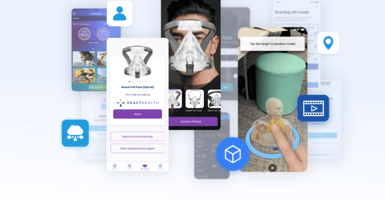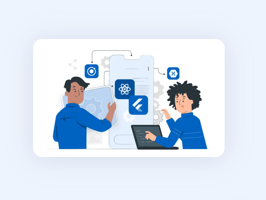Introduction In the modern business landscape, optimizing operations and resource allocation is...
Comparing Software Development Pricing Models: Fixed Price vs. Time and Materials vs. Dedicated Team
In the world of software development pricing models, one of the most critical decisions you'll make is how you're going to price your project. The choice of pricing model can significantly impact your project's outcome, budget, and overall success. When it comes to pricing software development projects, there are three common models to choose from: Fixed Price, Time and Materials, and Dedicated Team. In this article, we will explore these pricing models, their advantages, disadvantages, and when each is most suitable for different types of projects.
Fixed Price Model
Advantages:
-
Budget Certainty: The Fixed Price model offers clients a clear and predictable budget. Once the contract is signed, the cost of the project is locked in, and there are no surprises.
-
Low Financial Risk: Clients can plan their finances with confidence, as they know the total cost from the beginning, and the responsibility for cost overruns falls on the development team.
-
Simplified Management: The project management burden falls on the development team, which is responsible for delivering the project within the agreed-upon budget and timeline.
Disadvantages:
-
Scope Rigidity: Changes to project requirements can be challenging and costly. Any modifications to the scope can lead to scope creep and additional charges.
-
Limited Flexibility: If the project's requirements are not well-defined upfront, this model can be challenging to implement successfully.
-
Potentially Lower Quality: To adhere to the fixed budget, developers may rush to meet deadlines, potentially impacting the quality of the final product.
Time and Materials Model
Advantages:
-
Flexibility: This model is ideal for projects where the scope is not entirely clear at the outset or where requirements are likely to change over time.
-
Continuous Improvement: Clients can adapt the project as it progresses, making changes to features and functionalities based on evolving needs.
-
Quality Focus: Developers can prioritize quality since they are not constrained by rigid timelines.
Disadvantages:
-
Budget Uncertainty: Costs are not fixed, which can make budgeting and financial planning more challenging.
-
Client Involvement: Clients need to be actively engaged in the project to manage scope and expenses effectively.
-
Risk of Overspending: Without clear budget constraints, it's possible for costs to escalate if not carefully managed.
Dedicated Team Model
Advantages:
-
Extended Team: Clients get access to a dedicated and skilled team that works exclusively on their project, leading to a deeper understanding of the project's goals and requirements.
-
Control and Transparency: Clients maintain full control over the project, with the ability to set priorities, make changes, and closely monitor progress.
-
Scalability: The team size can be adjusted as the project evolves, allowing for flexibility in resource allocation.
Disadvantages:
-
Continuous Engagement: Clients need to be involved in managing the team, setting priorities, and making decisions throughout the project.
-
Budget Control: While this model offers control, it also requires close attention to budgeting and cost management.
-
Resource Dependency: The success of the project relies heavily on the expertise and performance of the dedicated team.
Choosing the Right Model
The choice of pricing model depends on your project's specific needs and circumstances. Here are some considerations to guide your decision:
-
Fixed Price: Best suited for well-defined projects with clear and stable requirements. It's a good fit when you need budget predictability and are willing to trade off some flexibility.
-
Time and Materials: Ideal for projects with evolving requirements, research and development tasks, or those where the scope may change over time. It offers flexibility at the expense of budget predictability.
-
Dedicated Team: A great choice when you require a high level of control and want a long-term partnership. It's suitable for projects that demand a dedicated, experienced team working closely with you.
In conclusion, the choice of a software development pricing model is a crucial decision that can significantly impact your project's success. Assess your project's requirements, budget constraints, and your level of involvement to select the model that aligns best with your goals and expectations. Each pricing model has its advantages and drawbacks, and the key is to match the right model with the right project to ensure a successful outcome.


